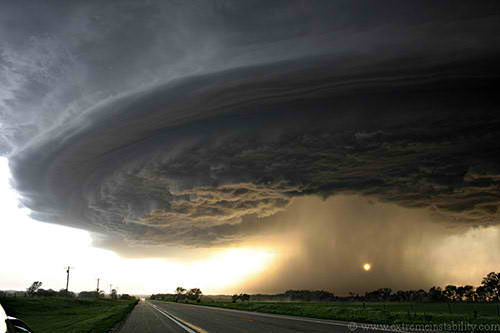
Eco-Friendly Preparation for Natural Disasters
Natural disasters affect human society in more than one way. The two most notable examples that always go hand in hand are infrastructural damage and humanitarian crises. However, there is one, equally as tragic after-effect that always follows their trail and makes their consequences even more profound – environmental problems. So, in order to try to mitigate this problem to the fullest extent, we have to think about disaster reaction and prevention in a more eco-friendly way. Let’s see how.
Make sure you have an ample amount of drinking water
Each member of your family should have at least four liters (one gallon) of drinking water for each day of the impending crises. If you are making precautionary stockpiles, be sure you are supplied for at least three days. To go an extra mile, install a filtering system so you can reclaim water and store your supplies in the BPA-free packages.
Stockpile non-perishable food
As for the food, you should follow the same rules as with water – your family should be able to get
through at least three days when cut off. Some of the best non-perishable options are:
- Peanut butter – A great source of energy, brimming with healthy fats and protein.
- Cereals – Grain products like brown rice, wheat, barley, and oats are a rich source of carbohydrates, oils, vitamins, and fats, which is incredibly easy to repack and stockpile.
- Powder milk – Milk makes an excellent source of calcium and vitamin D. Powder milk is the most sustainable option available.
Keep your phone alive with solar energy
In the case of emergency, your phone might just be the most useful tool you can have on disposal, serving a variety of purposes ranging from GPS location to emergency flashlight. The downside – the current cellphone batteries rarely last past the day of use. Solar-powered chargers are both a very practical (especially in the cases of emergency) and sustainable way to address this problem.
Ensure you have the right insurance coverage
The lack of proper insurance coverage renders almost all other efforts in dealing with the consequences of a disaster virtually meaningless. Quantity surveying experts, qualified to conduct a building insurance valuation can quickly calculate the cost of property replacement taking into consideration the chances of a region-specific disaster strike, and determine the proper premiums that will ensure the adequate coverage.
Reinforce your home using eco-friendly materials
The more durable you make your house to be, the less thought you need to put into the dangers lurking down the road. Fortunately, the materials used for reinforcing can also play along with the green agenda. For instance, metal roofs that can be made out of recycled materials such as coal, steel, and zinc, present a very reliable option in the case of a strong wind or a hurricane.
Make yourself an eco-friendly emergency kit
Aside from the food and water that are covered above, every emergency kit consists of a lot of disposable supplies such as towels, plastic ties, garbage bags, rain ponchos, bottles, diapers, cups, plates, cutlery, etc. The good news is that all of the mentioned products come in an eco-friendly variety, so even if they are misplaced, swept aside, or simply thrown away, they won’t make the impact made by the emergency much worse.
Have a plan for removing trash and debris after the disaster
One of the reasons why natural disasters produce such a negative impact on the environment is the extensive waste and debris that continues to plague nature long after the emergency is over. So, have a clear plan for removing the aforementioned.
- Food waste – Food waste is organic waste so it can be repurposed and used for composting.
- Clothing – Clothing ruined by the storm or flood can be dealt with in two ways – it can either
be given to charity or recycled. - Furniture – Ruined furniture can be used as a material for new pieces.
- Appliances – Household appliances are amongst the most dangerous waste you can leave
lying in nature. Make sure that all non-functioning units are gathered for recycling. These few tips should help you prepare and deal with natural disasters in a way that will make these tragic incidents if not more bearable, than, at least, less harmful for the environment. It may not seem like much, but any kind of victory is a step in the right direction. Keep this in mind while preparing for the next crisis.
 WhosGreenOnline.com Your Online Magazine and Directory for Green Business, Product, Service and News!
WhosGreenOnline.com Your Online Magazine and Directory for Green Business, Product, Service and News!


